We are pleased to bring you this piece from Mary DeJong. Mary is a spiritual ecologist, ecotheologian, urban naturalist, and practitioner and guide of place-based pilgrimage. She specializes in the spiritual companionship of “rewilding;” offers online virtual courses, retreats and pilgrimages in the Pacific Northwest and in Iona, Scotland that strengthen the unique and mystical interconnection of participants, the sacred, and the natural world. Her work can be found at waymarkers.net.
It is common to empty pockets and backpacks of found natural treasures in our family. Stones, pinecones, feathers, and flowers often stop me and my children in our tracks; something is alluring and even timely in their form. On too many occasions to count, these natural items have offered a sort of synchronistic attunement–a sacred wisdom that emanates from the particularity of its place, as well as the felt response as if receiving gifted guidance.
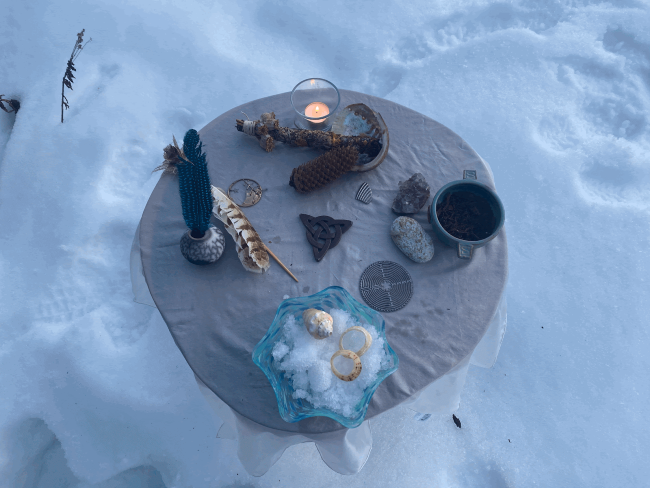
As a spiritual ecologist and eco-theologian who practices within the Celtic Christian spirituality stream, I hold firmly to the idea that the natural world is animate, infused with the divine presence and wisdom of God. Within this spiritual worldview, our personal and ecological salvific healing is connected to remembering that every creature is a holy mouthpiece; the elements, seasons, and all the various life forms within a bioregion are a sort of sacred script. And so I walk with full attention. In our family we say, “keep your eyes up and your ear to the ground” when walking through our neighborhood–we walk with a sense of connection to presence and purpose.
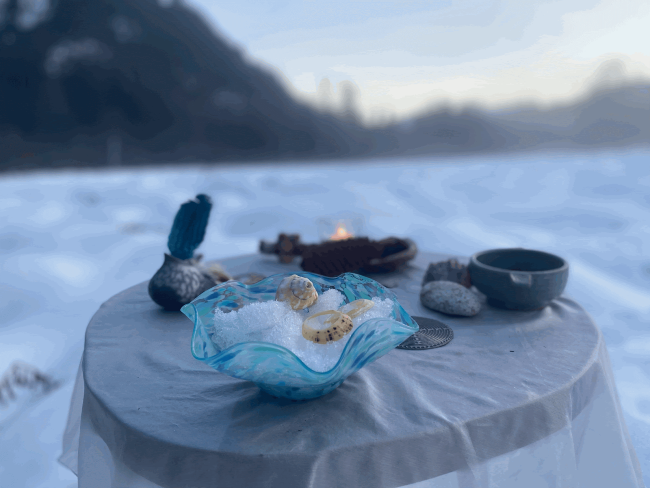
This isn’t so unlike the direction given to the Isrealites when they were wandering in the wilderness. Essentially they were told to look for way markers, which in Hebrew translates to stones and trees, guiding forms from the natural world that would lead them to a liberated sense of home (Jeremiah 31:21). When I encounter a sense of awe and wonder, or find myself intrigued by a shell, or shift of wind, I become curious about what divine wisdom is contained within that particular wild expression–how is it guiding me towards a fuller sense of belonging to myself, the Sacred, and the more-than-human world? This shifts a saunter into a ceremony, a ramble into a ritual.
American writer and eco-philosopher Charles Eisenstein says that “Ceremony sets the tone for each act and word being aligned with what one truly is, what one wants to be, and the world in which one wants to live”1 On these wild wanders, every stone is a sacrament; every plant a prayer. The place becomes holy ground; reverence and respectful reciprocity is the response.
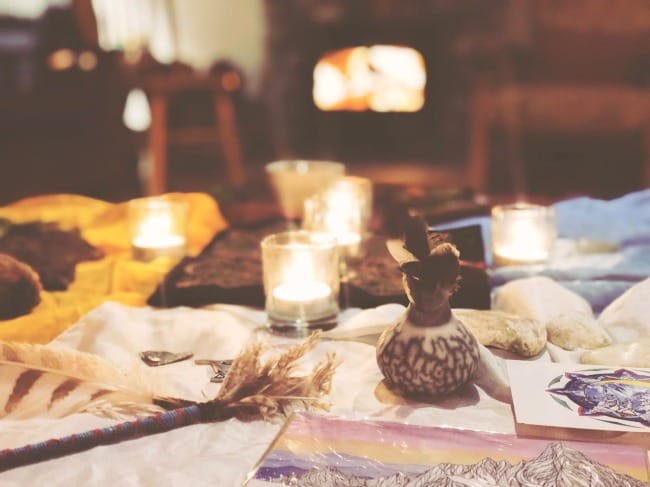
Altars have been created by humans for millennia as a way to focus external gratitude into ritual practices and to offer devotion to deities. They become a practical place where the immaterial can become material–where hopes take the shape of feathers; prayers, stones; and divine direction shows up in a myriad of ecological forms!
In our family, we create nature altars in our home as a way to mark the holy associations between the sacred saunter experienced out there and how it informs and develops our inner spiritual lives. We engage the nature altar as a way to mark and celebrate our sacred stories, the liturgical seasons of the Earth, and our own family spiritual formation.
We are now within the holy days of Advent and the seasonal shift towards the deep divine dark of the Winter Solstice. A nature altar is a simple and beautiful ritual to practice discovering the ceremony that is occurring all around us within the natural world!
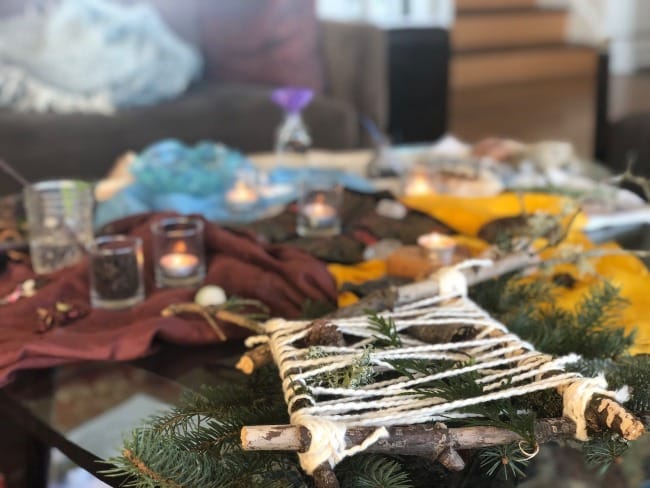
How to Co-Create Your Nature Altar
You do not need anything more than that which already surrounds you! This is an altar that is predicated on spiritual abundance. You have all that you need.
First, determine the location of your nature altar. Any flat surface will do. This can be a window sill, a book shelf, the top of a piano or even the refrigerator! You are locating a place that will have minimal disturbance.
Mark this spot with a cloth or piece of silk. Using a bit of fabric helps designate the space and delineate its sacred purpose.
Place a candle at the center of the fabric. Fire has been an essential part of spiritual rituals for thousands of years as the element represents cleansing and burning off the old and preparing for the new. Candles are used in many religious ceremonies as they symbolize one's willingness to receive the light of God.
Prepare for a walk or time in nature. This could be in your backyard, your local park, or even just walking on the sidewalks in your neighborhood. Enter into this walk as you would a ceremony: expect an encounter with the Sacred! Perhaps you ask for a sign from God through the natural world that is in response to a current situation or event in your life. Perhaps you are looking for a particular way that the divine guidance is manifesting through the season. Be on the lookout! I have no doubt that you will be given an altar item that is in direct alignment with what you are needing. Before picking up the wild liturgical item, ask permission. Make sure you aren’t taking something from someone else’s yard, or cutting a living branch from its source. Offer thanks to them for participating in your altar.
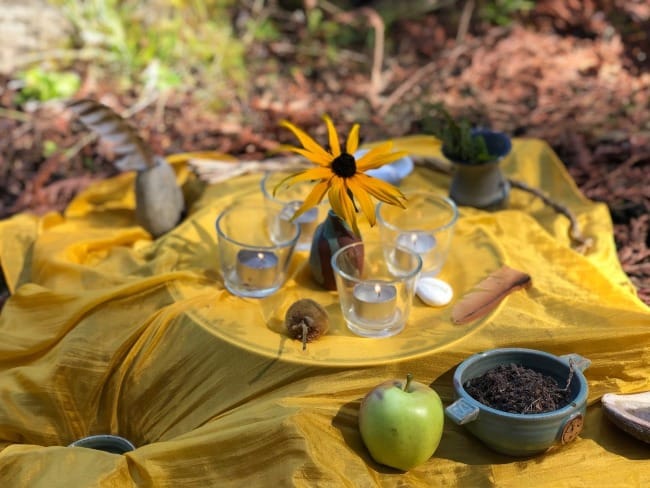
Place the item(s) on your altar. Arrange them in a way that is meaningful to you. Nature altars are dynamic spaces; you may continue to add to it throughout the season with meaningful pieces that resonate with the season, your personal formation, or what is growing around (and within!) you. This can become a place to celebrate things you find beautiful, or be where you connect with a wild source of wisdom. It may become a place of prayer for personal and ecological healing. There is no right or wrong way to make an altar! However you use it, your Nature Altar is something to tend and return to throughout the course of the year. It changes with you just like the changing of the seasons!
Mary

Want to support The Ecological Disciple?
A year-end gift to our parent organization—Circlewood—supports the current and future work of The Ecological Disciple.
1 Charles Eisenstein, “Every Act a Ceremony." This article was first published on Charleseisenstein.org and is available under a Creative Commons Attribution 4.0 International License.